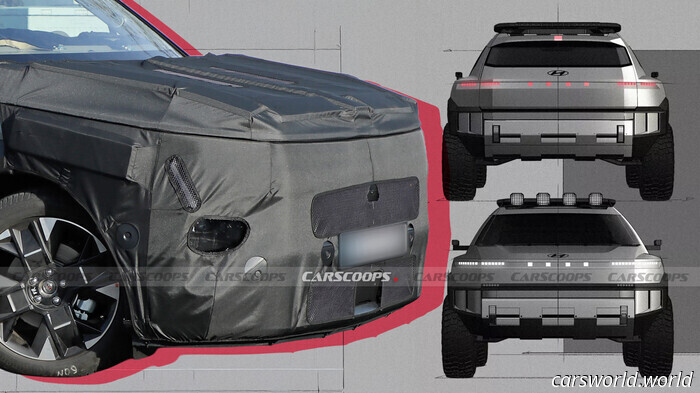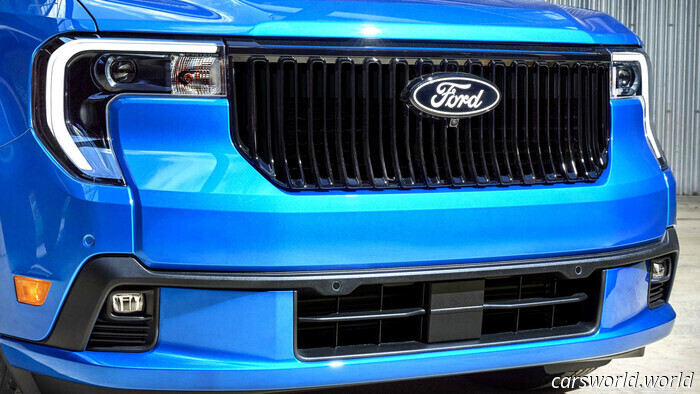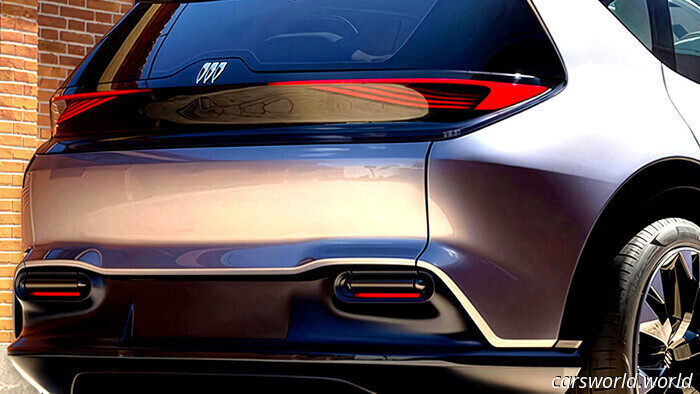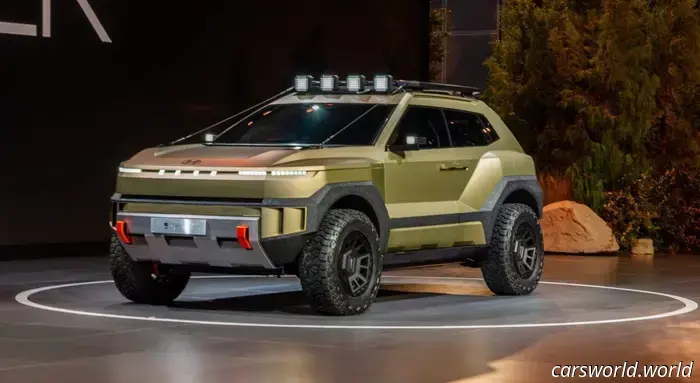The ID.Cross electric SUV will join the ID.Polo in Volkswagen's lineup starting in 2026, but it is expected to be significantly more popular. VW’s 2025 ID.Cross concept is transitioning into a production electric vehicle. This electric version of the subcompact T-Cross introduces a new design language for VW. The concept features a front-mounted motor with 208 hp and a range of 261 miles. Volkswagen’s smallest electric SUV has emerged from the concept phase and is now on public roads. Our spy photographers captured the first images of the ID.Cross prototype, providing an initial glimpse of the subcompact EV that was showcased at the Munich Auto Show last September. Although still clad in camouflage, the production model bears a striking resemblance to the original concept. The proportions appear nearly identical; the ID.Cross has short overhangs, a rounded front, and a slightly tapered rear that reflects the concept’s “urban-friendly” design. The final version is expected to align closely with the concept’s dimensions, which were optimized to maximize interior space within a compact size: about 4,160 mm (163.8 inches) in length, making it shorter than the Taos in the U.S. and squarely within the subcompact EV segment. Even while camouflaged, the outlines of the headlights and taillights appear reminiscent of those from the Munich exhibit, hinting at VW’s latest light-bar design. Although not visible, it’s likely that the three illuminated rectangles integrated into the concept’s black C-pillar have made their way to the production model as well. The concept's quirky interior, designed to resemble a yoga studio on wheels, won't be carried over in its entirety, so don’t expect pastel lighting or Zen-garden textures in the standard version. However, VW's newest compact cabin layout, featuring a larger infotainment screen and enhanced physical controls, should be included. What powers it? The ID.Cross is based on the latest iteration of the MEB platform, which has been optimized for this new front-wheel-drive generation of small electric vehicles, including the ID.Polo. The concept was designed with a single-motor configuration generating about 208 hp (211 PS / 155 kW), which is a plausible target for the production model. Additionally, we anticipate that less powerful options will also be introduced to broaden availability. Volkswagen did not disclose the battery size for the concept, but they indicated it could achieve a 261-mile (420 km) WLTP electric range, providing a good indication of the real-world driving capabilities we can expect when it debuts globally next year. Will the U.S. get it? Sales in the U.S. have not yet been confirmed; however, in Europe, the ID.Cross is expected to start around £25,000/€28,000 ($32,000) when it competes against other electric crossovers like the Kia EV2, Toyota Urban Cruiser, and its VW Group counterparts, the Skoda Epiq and Cupra Raval.
Similar to the situation in the US, Honda may struggle to achieve significant sales of the Prelude in Canada.
Recently, Honda unveiled the pricing for the Prelude in Canada after previously announcing it for the US and Europe.
The difference in tariffs likely accounts for the price disparity between the two neighboring countries.
The Prelude’s 200 hp hybrid system falls short when compared to competitors like the 400 hp Nissan Z coupe.
Although several Honda models have seen price increases over the last few years, the 2026 Prelude's pricing is surprising. With a base price of $43,195 in the US, which includes a $1,195 destination fee, it enters a price range that seems unrealistic for a front-wheel-drive hybrid coupe branded as a Honda.
However, for Canadian customers, the situation is somewhat different. Canadian buyers can purchase the vehicle for nearly $7,000 less than their American counterparts, a price difference significant enough to raise eyebrows regarding currency exchange rates.
Are Tariffs Responsible, or Is It Only Part of the Picture?
Honda has stated that the 2026 Prelude will be priced starting at CA$49,990 in Canada, or CA$52,987 with additional fees. When converted, these amounts roughly correspond to $35,535 and $37,687 in US dollars.
There hasn’t been an official reason provided for this price difference, but it is likely that tariffs play a role. Canada’s involvement in the Comprehensive and Progressive Agreement for Trans-Pacific Partnership (CPTPP) allows Japanese-made vehicles to qualify for a zero-percent duty.
Conversely, the US implemented a new trade policy in late 2025, which introduced a 15 percent tariff on most Japanese imports, including vehicles. While this new rate is less stringent than previous proposals, it is still higher than past tariffs.
When you do the math, America’s Prelude ends up being around 18.2 percent more expensive than its Canadian equivalent. Thus, even if tariffs account for 15 percent of that gap, an additional 3.2 percent still needs clarification.
This isn't an isolated incident; many Honda models are cheaper in Canada compared to the US. For example, the Civic Si starts at CA$39,562, roughly US$28,136, whereas the same model starts at US$32,190 in the US, including destination charges.
Prelude Compared to Competitors
Similar to the situation with the 2026 Prelude in the US, the price of the Canadian model places it above a considerable portion of its competition. For instance, the current Subaru BRZ begins at CA$32,695, and the Hyundai Elantra N quotes a starting price of CA$40,949, both offering significantly better performance than the new hybrid Prelude.
Another noteworthy competitor is the Nissan Z, which starts at CA$53,843 in Canada, nearly matching the Prelude's price while providing far more power and driving excitement.
In fact, while the Prelude’s powertrain is borrowed from the standard Civic Hybrid, offering just 200 hp, the Z’s twin-turbocharged V6 delivers an impressive 400 hp and 350 lb-ft of torque.
As for the Civic Type R, its stock in Canada is currently quite limited, making it challenging to find. However, if available, it starts at CA$53,100 before fees, only CA$3,000 more than the Prelude, and boasts greater power along with a similarly impressive interior.
At this early stage, it's difficult to predict how well the new Prelude will perform in sales, but considering its steep price, it would be surprising if it were anything other than a low-volume, niche model.
Other articles
 2027 Hyundai Tucson Spotted Testing in Germany While Operating Undercover at the LA Auto Show | Carscoops
The new Crater concept provides us with the clearest indication of how the next-generation Tucson appears beneath its camouflage.
2027 Hyundai Tucson Spotted Testing in Germany While Operating Undercover at the LA Auto Show | Carscoops
The new Crater concept provides us with the clearest indication of how the next-generation Tucson appears beneath its camouflage.
 Receive Free Makita Tools with Battery Purchases at Home Depot During This Early Black Friday Sale.
Currently, when you purchase a battery and charger kit from The Home Depot, you can choose one of eight free Makita power tools.
Receive Free Makita Tools with Battery Purchases at Home Depot During This Early Black Friday Sale.
Currently, when you purchase a battery and charger kit from The Home Depot, you can choose one of eight free Makita power tools.
 Ford Discovers an Unusual Issue in Only Two Vehicles Manufactured This Year | Carscoops
The Blue Oval's ongoing recall trend took an unusual turn as it is recalling precisely two vehicles due to a supplier mix-up.
Ford Discovers an Unusual Issue in Only Two Vehicles Manufactured This Year | Carscoops
The Blue Oval's ongoing recall trend took an unusual turn as it is recalling precisely two vehicles due to a supplier mix-up.
 Fiat’s Panda Camper Returns, Mimicking an Overlander | Carscoops
The Fiat Concept Dolce Camper reappears in South America, now sporting a fresh look.
Fiat’s Panda Camper Returns, Mimicking an Overlander | Carscoops
The Fiat Concept Dolce Camper reappears in South America, now sporting a fresh look.
 Buick's Latest Concepts Appear Remarkably Prepared for Production | Carscoops
The two concept studies were created at GM's Advanced Design studio located in Shanghai, China.
Buick's Latest Concepts Appear Remarkably Prepared for Production | Carscoops
The two concept studies were created at GM's Advanced Design studio located in Shanghai, China.
 The Hyundai Crater Concept is a cyberpunk off-roader that genuinely resembles a stylish car rather than an eyesore.
The Crater concept with its futuristic feel demonstrates that cyber elements are still relevant.
The Hyundai Crater Concept is a cyberpunk off-roader that genuinely resembles a stylish car rather than an eyesore.
The Crater concept with its futuristic feel demonstrates that cyber elements are still relevant.
The ID.Cross electric SUV will join the ID.Polo in Volkswagen's lineup starting in 2026, but it is expected to be significantly more popular. VW’s 2025 ID.Cross concept is transitioning into a production electric vehicle. This electric version of the subcompact T-Cross introduces a new design language for VW. The concept features a front-mounted motor with 208 hp and a range of 261 miles. Volkswagen’s smallest electric SUV has emerged from the concept phase and is now on public roads. Our spy photographers captured the first images of the ID.Cross prototype, providing an initial glimpse of the subcompact EV that was showcased at the Munich Auto Show last September. Although still clad in camouflage, the production model bears a striking resemblance to the original concept. The proportions appear nearly identical; the ID.Cross has short overhangs, a rounded front, and a slightly tapered rear that reflects the concept’s “urban-friendly” design. The final version is expected to align closely with the concept’s dimensions, which were optimized to maximize interior space within a compact size: about 4,160 mm (163.8 inches) in length, making it shorter than the Taos in the U.S. and squarely within the subcompact EV segment. Even while camouflaged, the outlines of the headlights and taillights appear reminiscent of those from the Munich exhibit, hinting at VW’s latest light-bar design. Although not visible, it’s likely that the three illuminated rectangles integrated into the concept’s black C-pillar have made their way to the production model as well. The concept's quirky interior, designed to resemble a yoga studio on wheels, won't be carried over in its entirety, so don’t expect pastel lighting or Zen-garden textures in the standard version. However, VW's newest compact cabin layout, featuring a larger infotainment screen and enhanced physical controls, should be included. What powers it? The ID.Cross is based on the latest iteration of the MEB platform, which has been optimized for this new front-wheel-drive generation of small electric vehicles, including the ID.Polo. The concept was designed with a single-motor configuration generating about 208 hp (211 PS / 155 kW), which is a plausible target for the production model. Additionally, we anticipate that less powerful options will also be introduced to broaden availability. Volkswagen did not disclose the battery size for the concept, but they indicated it could achieve a 261-mile (420 km) WLTP electric range, providing a good indication of the real-world driving capabilities we can expect when it debuts globally next year. Will the U.S. get it? Sales in the U.S. have not yet been confirmed; however, in Europe, the ID.Cross is expected to start around £25,000/€28,000 ($32,000) when it competes against other electric crossovers like the Kia EV2, Toyota Urban Cruiser, and its VW Group counterparts, the Skoda Epiq and Cupra Raval.
Similar to the situation in the US, Honda might struggle to sell the Prelude in large quantities in Canada.
